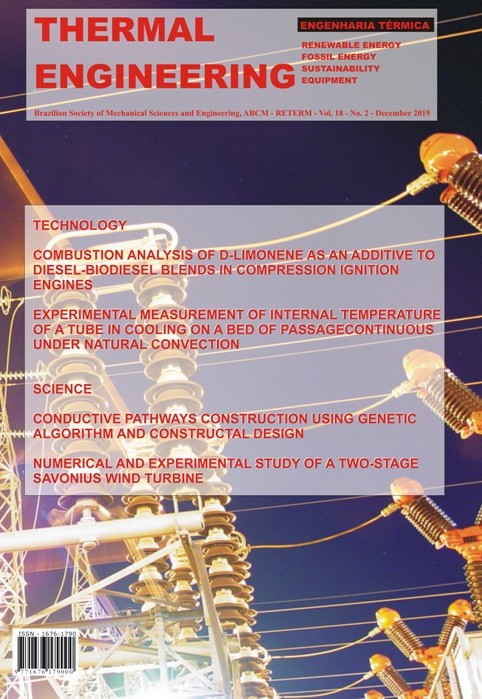GEOMETRICAL EVALUATION OF RECTANGULAR FIN MOUNTED IN LATERAL SURFACE OF LID-DRIVEN CAVITY FORCED CONVECTIVE FLOWS
DOI:
https://doi.org/10.5380/reterm.v18i2.70800Keywords:
constructal design, geometrical optimization, rectangular fin, forced convection, lid-driven cavityAbstract
In this work, it is investigated the geometric effect of rectangular fin inserted in a lid-driven square cavity over thermal performance of laminar, incompressible, steady and forced convective flows. This study is performed by applying Constructal Design to maximize the heat transfer between the fin and the cavity flow. For that, the problem is subjected to two constraints: area of the cavity and area of rectangular fin, and two degrees of freedom: height/length ratio of rectangular fin (H1/L1) and its position in upstream surface of the cavity (S/A1/2). It is considered here some fixed parameters, as the ratio between the fin and cavity areas (ϕ = 0.05), the aspect ratio of the cavity dimensions (H/L = 1.0) and Prandtl number (Pr = 0.71). The fin aspect ratio (H1/L1) was varied for three different placements of the fin at the upstream cavity surface (S/A1/2 = 0.1, 0.5 and 0.9) which represents a lower, intermediate and upper positions of the fin. The effects of the fin geometry over the spatial-averaged Nusselt number ( ) is investigated for three different Reynolds numbers (ReH = 10, 102 and 103). The conservation equations of mass, momentum and energy were numerically solved with the Finite Volume Method. Results showed that both degrees of freedom (H1/L1 and S/A1/2) had a strong influence over , mainly for higher magnitudes of Reynolds number. Moreover, the best thermal performance is reached when the fin is placed near the upper surface of the cavity for an intermediate ratio between height and length of rectangular fin, more precisely when (S/A1/2)o = 0.9 and (H1/L1)oo = 2.0.
Downloads
Published
How to Cite
Issue
Section
License
Direitos Autorais para artigos publicados nesta revista são do autor, com direitos de primeira publicação para a revista. Em virtude da aparecerem nesta revista de acesso público, os artigos são de uso gratuito, com atribuições próprias, em aplicações educacionais e não-comerciais.



